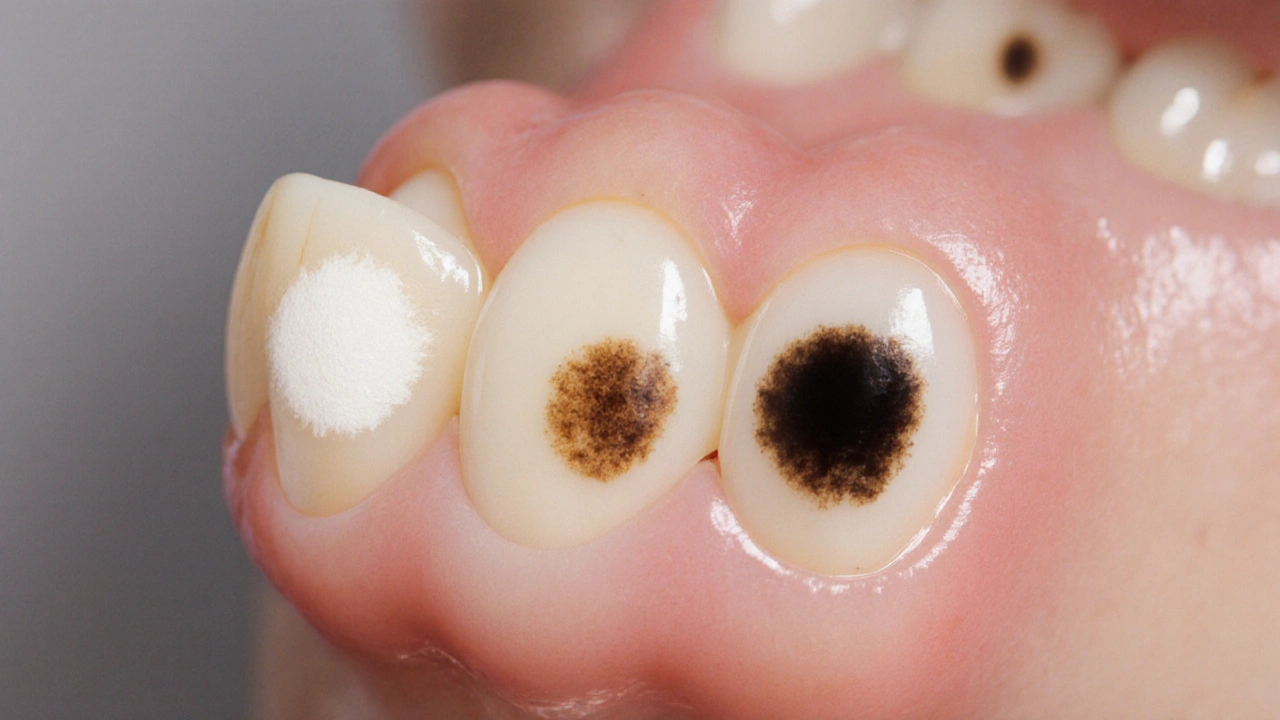Zubní kaz barva – co to je a proč by vás to mělo zajímat
When talking about zubní kaz barva, jedná se o změnu pigmentace zubu, která vzniká v důsledku rozkladu skloviny a dentinu vlivem bakterií. Also known as barva kazu, it often appears as hnědé, černé nebo šedé skvrny na povrchu zubu. zubní kaz barva is more than an aesthetic issue; it signals, that the tooth structure is weakening. This connection links directly to the broader concept of zubní kaz, proces, při kterém bakterie rozkládají minerály zubu a vytvářejí dutiny. Understanding the color shift helps you catch the problem early, before the cavity deepens.
Co způsobuje změnu barvy a jaký má vliv na výběr léčby
One of the most common culprits behind abnormal tooth coloration is the use of certain antibiotics during childhood, especially tetracyklinové zuby, zuby zbarvené po podání tetracyklinu, který se váže na vyvíjející se sklovinu. Kids who took tetracyklin často skončí s žlutavě až hnědým odstínem zubů, což může být zaměněno s kazem. Another factor is the natural progression of zubní kaz, which, as the decay advances, creates darker patches. These patches aren’t just skin‑deep; they reflect minerals that have leached out, making the enamel more porous. When the tooth surface becomes porous, it reacts differently to food pigments and staining agents, intensifying the discoloration. Consequently, the type of discoloration determines which treatment is appropriate – whether you need a simple cleaning, a restorative filling, or cosmetic measures.
Diagnosing the exact cause of zubní kaz barva requires a dental exam, often complemented by a radiografický snímek. The dentist evaluates the depth of the lesion and decides if the tooth can be saved with a filling or if a more extensive procedure, like a crown, is needed. If the discoloration is mainly due to staining rather than deep decay, cosmetic options become viable. One popular solution is bělení zubů, metoda, která pomocí peroxidu vodíku nebo karbamidu přebarví skvrny a rozjasní zubní sklovinu. Bělení can effectively lighten superficial stains, but it won’t fix structural damage caused by decay. For deeper or stubborn discolorations, especially those linked to tetracycline or extensive decay, dentists may recommend zubní fazety – tenké keramické nebo kompozitní vrstvy, které zakrývají celý povrch zubu a obnoví jeho přirozený vzhled. Both whitening and veneers rely on a solid tooth foundation; otherwise, the treatment can fail or lead to further problems.
In practice, the decision chain looks like this: zubní kaz barva signals a potential decay (zubní kaz) → the dentist assesses depth (radiografie) → if decay is shallow, remineralizační gely or simple fillings may suffice → if discoloration is mainly cosmetic, bělení zubů or fazety are considered. This logical flow ensures that you address the root cause, not just the visual symptom. Moreover, proper oral hygiene, reduced sugar intake, and regular check‑ups can prevent the color shift from progressing to a full‑blown cavity. By keeping the enamel healthy, you also minimize the need for invasive procedures later on.
Below you’ll find a curated selection of articles that dive deeper into each aspect mentioned here – from how often you can safely whiten your teeth to the specifics of treating tetracycline‑induced discoloration, from managing tooth sensitivity after bleaching to understanding the costs of restoring a damaged front tooth. Use these resources to decide which path fits your situation best, and remember that early detection of zubní kaz barva can save you time, money, and a lot of hassle.
Jakou barvu má zubní kaz? - průvodce rozpoznáním a prevencí
Zjistěte, jaké barvy naznačují jednotlivé fáze zubního kazu, jak je diagnostikovat a jak jim předcházet. Praktické tipy pro včasnou reakci a zdravý úsměv.

